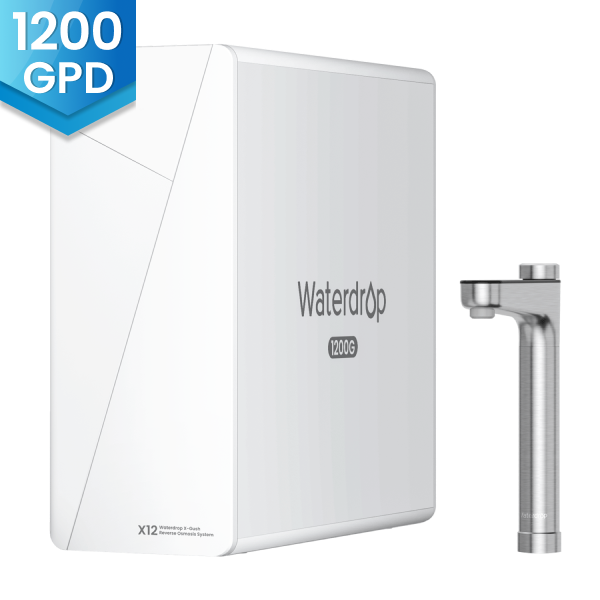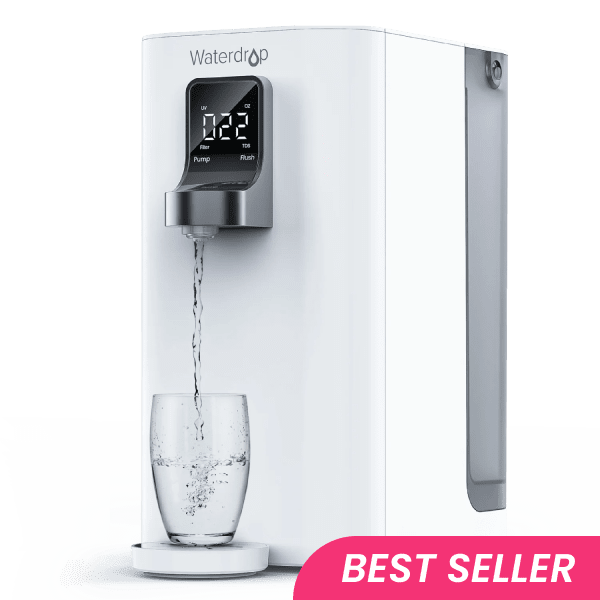What To Do During Toxic Chemical Spills
by Dr. Jonathan Doyle - Updated April 04, 2023
A Look at The Chemical Plant Spill in Philadelphia
About 8,1000 gallons of latex-based solution ended up in the Delaware River on March 24. The Delaware River is a few miles upstream of an important water intake serving Philadelphia’s Baxter Water Treatment Plant.
According to Trinseo, a company that manufactures latex binders and plastics, equipment failure has been identified as the cause of the leak. Although the authorities have assured residents that preliminary checks do not suggest the presence of contaminants in Philadelphia’s water after the Friday spill, residents have resorted to panic-buying bottled water. As a result, most grocery stores in Philadelphia are left with no bottled water on their shelves.
Residents have attributed the rushed purchase to the growing concerns about the possible health hazards and the confusion emanating from the authorities’ repeated assertions on the municipal water’s safety. However, it is important to note that Philadelphia city authorities earlier advised residents to drink bottled water as a safe option.
What Are The Chemicals Associated with The Philadelphia Spill?
Trinseo reported that the leaked solution comprised 50% latex polymer and 50% water. However, officials have listed three chemicals spilled in the incident:
Butyl Acrylate
When exposed to the body in its raw form, butyl acrylate is commonly associated with respiratory tract, eyes, and skin irritation. Symptoms of acute exposure to butyl acrylate include tearing, redness, and irritation of the eyes. In addition, the chemical can cause breathing issues, nausea, dizziness, scratchy throat, and runny nose if inhaled. Repeated exposure of butyl acrylate to the skin also causes cracking, itching, swelling, and redness. The lungs and the nervous system are also at risk during chronic exposure, causing adverse behavioral changes.
Ethyl Acrylate
Ethyl acrylate is classified as a Group B2 chemical by the EPA. It is a potential human carcinogen with no developed potency estimate required to assess risk by inhalation. The colorless, pungent-smelling liquid is vital in manufacturing plastics, paints, resins, and other essential materials.
Inhaling ethyl acrylate can irritate the lungs, throat, nose, and eyes. If exposed to the human body in high amounts, the chemical can cause severe health complications. In addition, ethyl acrylate causes animal stomach cancer, making it a possible carcinogen.
Ethyl acrylate mostly finds its way into the human body through inhalation, and the effects are well documented. However, there is limited research on how ethyl acrylate affects the body when ingested through contaminated water.
Methyl Methacrylate
The third chemical on the list is the flammable, acrid-smelling liquid called methyl methacrylate. It is also crucial in producing dental materials, paints, resins, and plastics. Exposure to methyl methacrylate in humans can lead to skin, eyes, and respiratory tract irritation. Effects of short-term exposure include irritation of the eyes, throat, and nose, alongside neurological disorders and drowsiness. If the exposure is prolonged, the victim may experience symptoms like cardiovascular and respiratory impairment, skin rashes, and possible liver damage. Unfortunately, there is limited research on how methyl methacrylate affects the human body when ingested via contaminated drinking water.
Is It Safe to Drink The Philadelphia Tap Water After This Chemical Leak?
Although the Philadelphia Water Department has assured residents that the public tap water supply remains safe, residents remain unconvinced and have resorted to buying and hoarding bottled water.
Based on findings by the EPA, there is a link between the occupational exposure of workers to acrylate/methyl methacrylate and colorectal cancer. Therefore, the leaked chemicals are associated with certain health risks, necessitating additional precautions.
Residents can adopt a water filter to purify their tap water before drinking. This is even more important for individuals with a history of mild to serious allergies due to exposure to latex.
Can Filtration Remove The Latex-Based Solution From Water?
Luckily, certain filtration methods can efficiently filter out latex-based solutions from water. Latex forms a colloidal dispersion of tiny polymer particles when it comes in contact with water. Considering filtration is an effective separation method for colloidal dispersions, it can help separate water from latex.
Suitable filtration methods include reverse osmosis, ultrafiltration, and microfiltration. However, reverse osmosis is the most effective method of removing highly water-soluble organic compounds such as ethyl acrylate from water.
This water purification technology relies on a semi-permeable membrane to separate impurities from water. The tiny pores on the membrane only allow water molecules to pass through, shutting out larger particles, ions, and molecules.
During reverse osmosis filtration, water is applied to the water on the side of the membrane containing contaminated water. That means the water molecules are forced through the membrane into a separate clean water chamber while the contaminants are retained on the other side of the membrane.
Reverse osmosis has found multiple applications in commercial and residential setups, providing impurity-free water for drinking. It is also used in industrial processes as a source of purified water. In addition to being effective and efficient, reverse osmosis can remove most contaminants in water, including bacteria and viruses.
Experts recommend purifying your drinking water in case of chemical contamination or spillage. In the case of Philadelphia, adopting this precautionary measure can guarantee that your tap water is safe for drinking.
Keep Your Family Safe During Frequently Happened Hazardous Chemical Spills
The Coalition to Prevent Chemical Disasters has recorded more than 30 incidents in the first seven weeks of 2023, with roughly one occurring every day and a half. Along with the disturbing Ohio incident, other recent occurrences involving hazardous chemicals include:
A train transporting ethanol derailed on Thursday morning (March 30) in Raymond, Minnesota. This resulted in several rail cars catching fire. The EPA has reported that they are currently monitoring the air for particulate matter and volatile organic compounds.
On Wednesday (March 29), several barges carrying over 1,000 tons of a "toxic alcohol" collided on the Ohio River. While some of the containers held harmless materials such as soy and corn, one of the units was carrying 1,400 metric tons of methanol, which the CDC defines as a “toxic alcohol”. As a result, the barge carrying the hazardous substance was partially submerged.
In addition, the recent disclosure that a nuclear power plant in Minnesota leaked 400,000 gallons of contaminated water raises doubts about whether the water we use every day is really safe.
According to the EPA, there are 150 serious chemical incidents a year in the U.S. Texas, Louisiana, and California are in the top three in number of accidents at facilities handling hazardous chemicals tracked by the EPA.
Precaution Is Better than Cure
The best way to combat the chemical contamination of water is prevention. With water filters, residents can ensure their drinking water is safe, clean, and protected from chemical spill hazards.

Here are other advantages of adopting a water filter:
It makes your water contaminant-free
Water filters are designed to remove harmful impurities that make drinking water unsafe. These include viruses, bacteria, lead, and other heavy metals. You can rest assured of clean and healthy drinking water once you install a filter.
It improves odor and taste.
Filters also eliminate the offensive odor and bad taste associated with contaminated water. If your deal with a chlorine or sulfur smell in your water or your water is hard water, investing in a water filter can improve the taste and remove the odor.
It is cost-effective.
Bottled water appeals to most people as convenient. However, it is an expensive source of drinking water. Getting a water filter is a cheaper alternative, ensuring you get clean and safe drinking water in your house without breaking the bank.
It is safe for the environment.
Adopting a water filter instead of bottled water means you generate less plastic waste. Additionally, water filters can help conserve water by reducing the need for bottled water production.
In Conclusion
The easiest way to ensure you never run out of clean, healthy, and great-tasting drinking water is to install a reliable household water purification system like the reverse osmosis water filter system. An unlimited water supply lets you stay hydrated and go about your day without experiencing any water-related problems.
Prioritize your safety and that of your loved ones by protecting them from the harms of contaminated drinking water. Install a water filter today!
Recommended Reading:
Contaminants Detected in Fruitland Water
Special
Service District
30
Contaminants
EXCEED EWG HEALTH GUIDELINES
EXCEED EWG HEALTH GUIDELINES
30 Total Contaminants in Your Water
Water Provider
Fruitland Water Special Service DistrictPopulation Affected
120,000Water Source
Ground waterExceeds Guidelines
Others Detected















